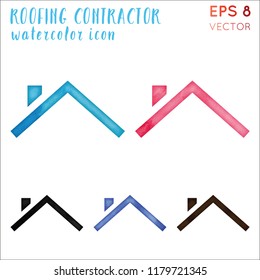Climate'S Result On Industrial Outside Painting: Critical Expertise For Success
Climate'S Result On Industrial Outside Painting: Critical Expertise For Success
Blog Article
Short Article By-Weiss Duckworth
When you're preparing an industrial exterior paint project, don't underestimate the effect of weather on your outcomes. You need to consider factors like temperature level, humidity, and rainfall, as they can make or break your paint task. For example, did you understand that perfect conditions call for particular temperature ranges and moisture degrees? Failing to monitor these elements can lead to uneven finishes or even damages to fresh paint. Comprehending these aspects is essential to accomplishing a durable, expert end result. So, what certain weather conditions should you watch out for?
Temperature Considerations
When it pertains to business outside painting, temperature plays a crucial duty in the result of your job. If you're repainting in severe heat, the paint can dry out too promptly, bring about problems like bad adhesion and uneven coatings. You intend to aim for temperatures in between 50 ° F and 85 ° F for the very best outcomes. Below 50 ° F, paint may not treat effectively, while over 85 ° F, you run the risk of blistering and fracturing.
Timing your project with the ideal temperatures is important. Begin your job early in the early morning or later on in the mid-day when it's cooler, specifically during warm months.
Additionally, consider the surface area temperature; it can be considerably higher than the air temperature, especially on sunny days. Use a surface area thermostat to check this prior to you begin.
If temperature levels are unpredictable, watch on the weather forecast. Sudden temperature declines or heat waves can thwart your strategies. You don't want to begin painting only to have the problems transform mid-project.
Humidity Degrees
Humidity degrees substantially affect the success of your commercial exterior paint task. When the humidity is too high, it can prevent paint drying and treating, leading to a variety of issues like poor attachment and finish top quality.
If you're planning a task during damp problems, you may find that the paint takes longer to completely dry, which can expand your project timeline and increase prices.
On the other hand, reduced moisture can also posture difficulties. Paint might dry out as well quickly, preventing appropriate application and leading to an irregular coating.
https://residentialpaintersnearme64218.blog2freedom.com/33268086/leading-suggestions-for-understanding-clean-lines-and-achieving-an-expert-search-in-your-indoor-paint 'll wish to keep an eye on the humidity degrees very closely to guarantee you're working within the optimal variety, usually in between 40% and 70%.
To obtain just click the following web site , take into consideration utilizing a hygrometer to gauge moisture before starting your job.
If you find the levels are outside the optimum range, you may need to adjust your timetable or pick paints designed for variable conditions.
Always consult the producer's guidelines for specific referrals on moisture tolerance.
Rainfall Influence
Rainfall or snow can considerably disrupt your industrial external painting plans. When rainfall happens, it can wash away newly used paint or create an irregular coating. Preferably, Suggested Studying want to select days with dry weather to make certain the paint adheres properly and cures successfully. If https://www.livingetc.com/features/four-paints-seattle-home captured in a rain shower, it's finest to stop the task and wait for problems to boost.
Moreover, snow can be even more destructive. Not only does it produce a wet surface, but it can additionally reduce temperatures, making it hard for paint to completely dry. This can bring about concerns like peeling off or blistering down the line.
It's crucial to examine the weather prediction before beginning your project. If rainfall or snow is forecasted, think about rescheduling.
Constantly keep in mind to enable appropriate drying out time in between layers, specifically if the weather condition remains unpredictable.
Verdict
To conclude, keeping an eye on the weather is vital for an effective industrial exterior painting job. By checking temperature, moisture, and rainfall, you can make sure the best conditions for application and curing. Bear in mind to intend your work around favorable climate and always follow supplier standards. With the right strategy, you'll attain a durable, attractive surface that can endure the aspects. Do not let the weather condition capture you unsuspecting-- remain notified and repaint smart!
